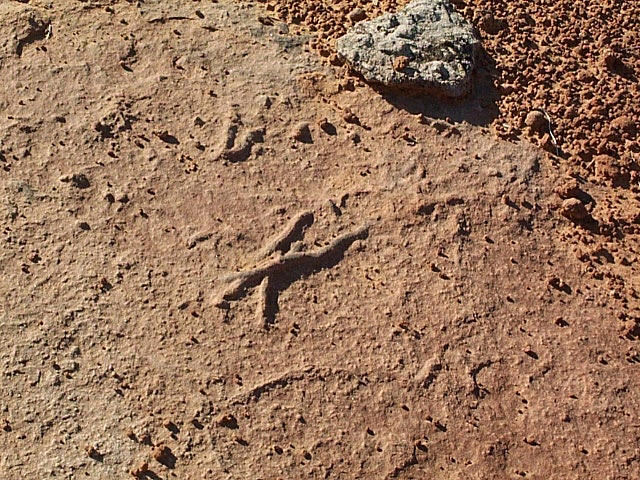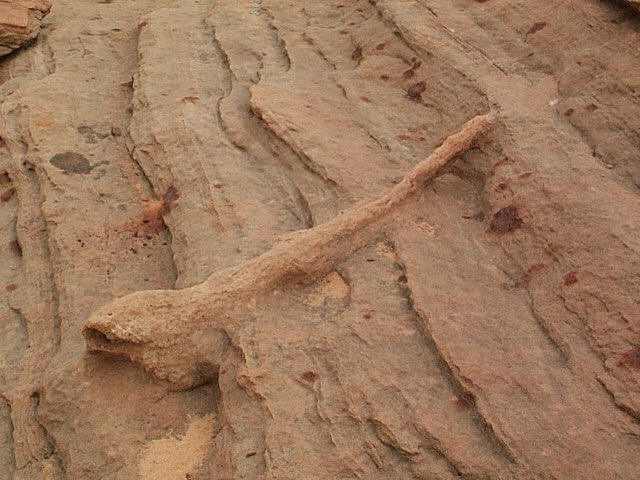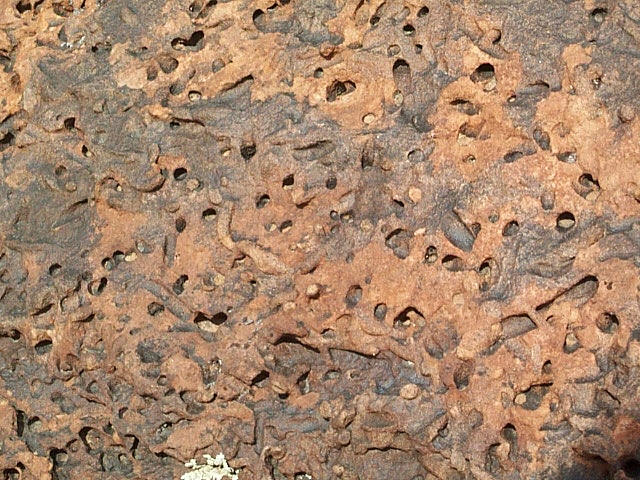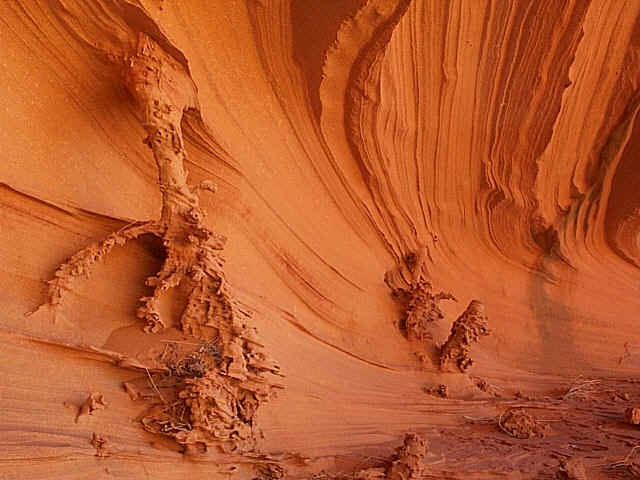

Invertebrate Trace Fossils
Invertebrate trace fossils include thin burrow tracks, various examples of social insect colonies, the ichnites (tracks) of Octopodichnus (spiders) and Paleohelcura (scorpions), organic trails, gyrochorte trails and perhaps crustaceans (crayfish)?
Invertebrate burrows




Burrows at Waterhole Canyon, Page, Arizona.
According to Rubin and Hunter, USGS, the
corkscrew burrows resemble the borrows of some modern
crustaceans. I assume they mean
some type of crayfish but it is hard to understand their
occurrence with the present day image of
the Navajo Sandstone ecosystem.
Social Nests


Worms?
Ants? Termites or what? Note that the burrows
start down at the cyclic crossbedding boundaries.
These burrows may have been created each year
during the rainy season?
Vertebrate Skeletal Fossils Invertebrate Skeletal Fossils
Vertebrate Trace Fossils Invertebrate Trace Fossils
Petrified Wood and Flora Casts Fresh Water Deposits